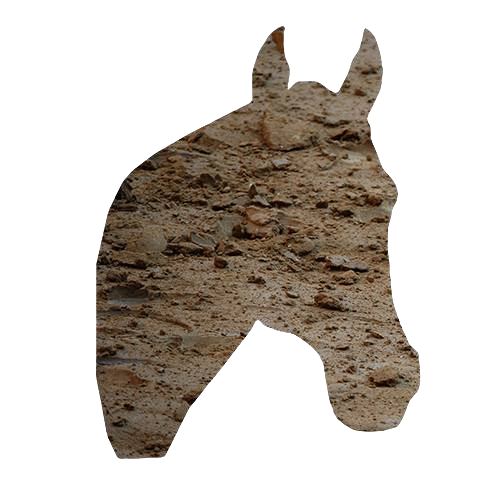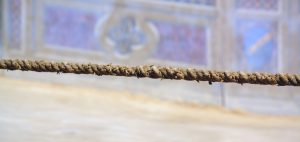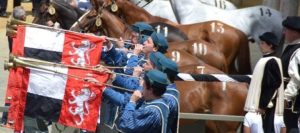www.thepalio.eu - dal Belgio con amore
The rules regarding the presentation of the horses and the batterie
1676 was a turning point in the history of the Palio. The Biccherna, who organized the Palio, decided to give all districts, including the less prosperous, the same chance of victory. They introduced the draw of the horses. Previously, districts were allowed to choose their own horse. Chapter IV of the current regulations deals with all stages of the presentation, selection and allocation of horses.
Article. 37, from the fifth paragraph, regulates the previsite and specifies the various tasks of the Veterinary Commission. To participate in the tratta, the horses must first go through a few steps. The final phase is the veterinary inspection where the owners must register their horse in writing. The examination is carried out by a committee of veterinarians appointed by the city council. Horses that survive the inspection will then have to be registered for the tratta, the morning itself. From the list of registered horses, the captains of the 10 participating districts make battery in which the horses will ride.
Nowadays, due to the large number of registered horses, Prove Regolamentate are also ridden the day(s) before the tratta. However, the regulations say nothing about this. These proves were regularized by the city. Until 1991 this was still done in the old, almost romantic way where owners ‘secretly’ rode their horses into the city to run a few laps around the Piazza. Today, this happens under the watchful eye of the city at dawn on June 28 and August 12. In July, there is also riding on July 27 because of the large number of horses. They want to give horses that are actually too young a chance to get to know the Piazza. Since 2018, horses that do not show up for this prove are excluded from the Palio after.
According to Article 38, the presentation of the horses must take place on the morning of June 29 and August 13 at the appointed time (between 6.30 and 7.30 am). This must be done in the presence of a representative of the municipality, assisted by a secretary and the municipal veterinarian. In addition, the Deputati della festa are also present, as well as the captains of the 10 participating districts. Each owner is responsible for the risks and dangers that may arise during the battery life. The horses may only be equipped with reins. Once registered, the horse is available to the municipal administration and cannot be withdrawn by the owner. The chosen horses, once assigned by lot, remain in use from the contrada up to the Palio. The winning horse also remains available to the contrada for the victory procession the following day. At registration, the horses are marked with a number painted on the thigh. The choice of the ten horses to be assigned takes place after the trial competitions, the so-called batterie, where the same rules are applied as for prove and the Palio (art. 41). The horses must be ridden by fantini who are of age and have no penalty from previous Palios. They will have to wear a white jacket and a helmet in the colors of the Balzana (white/black). The helmets have replaced the fabric caps since 1991.
Batteries are composed by the 10 captains of the participating contrade in the manner they deem most appropriate for the purpose (Art. 42.1). The horses also ride without a saddle for the battery. This arrangement, which may seem self-evident today, was only introduced in 1920. Before that it was not uncommon to see fantini driving with every possible means that could make it easier for them. A horse may also be asked to ride multiple times if the captains deem it necessary. Finally, Article 40 provides for a rule that seems useless today, but which was even almost applied in a not so distant past (in August 1948, for example, barely 11 horses were marked, with great difficulty): if the number of horses presented is less than ten can the municipality requisition horses to get to the required 10. A fee is also provided for this, taking into account the compensation received by other owners.



